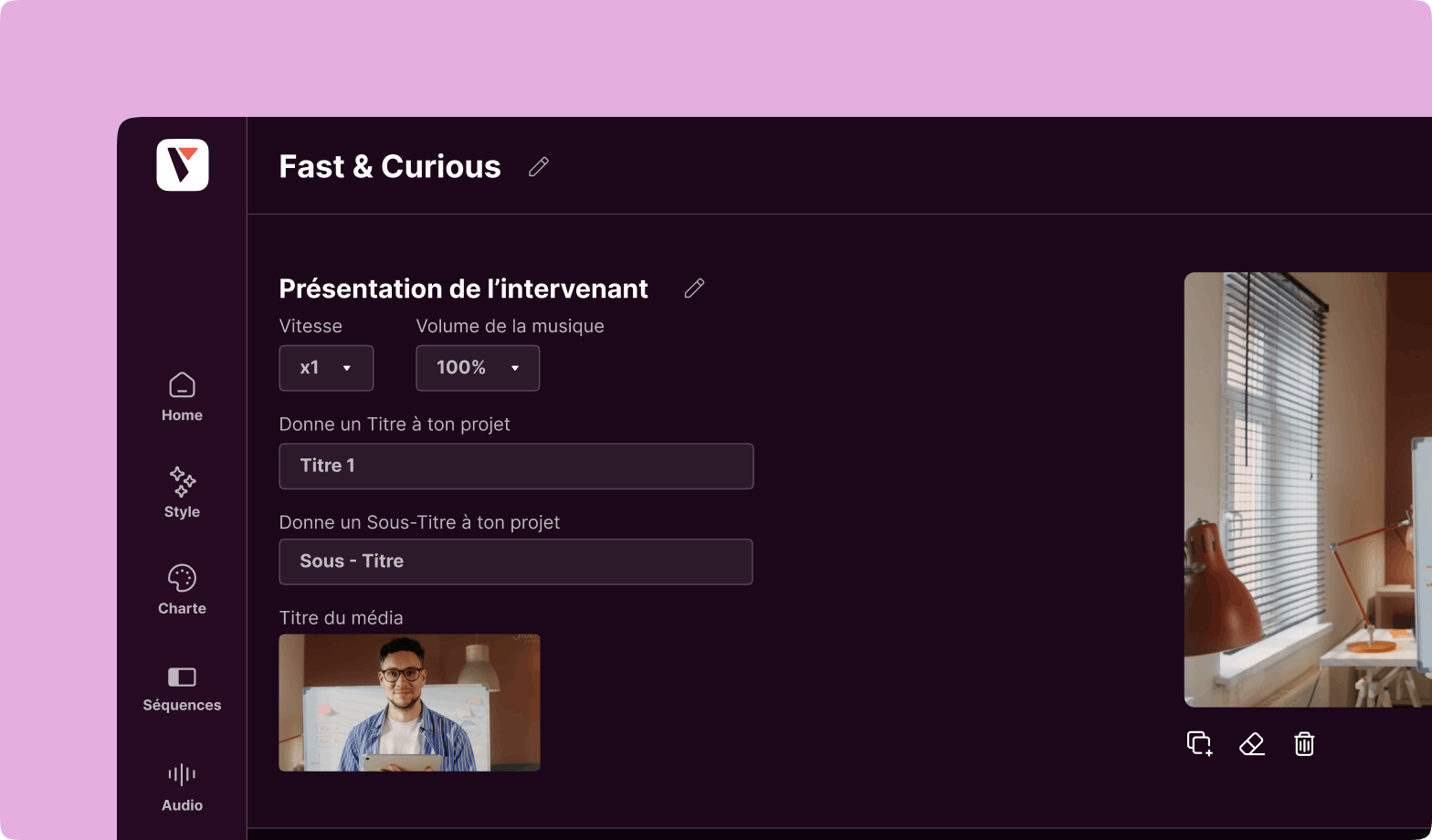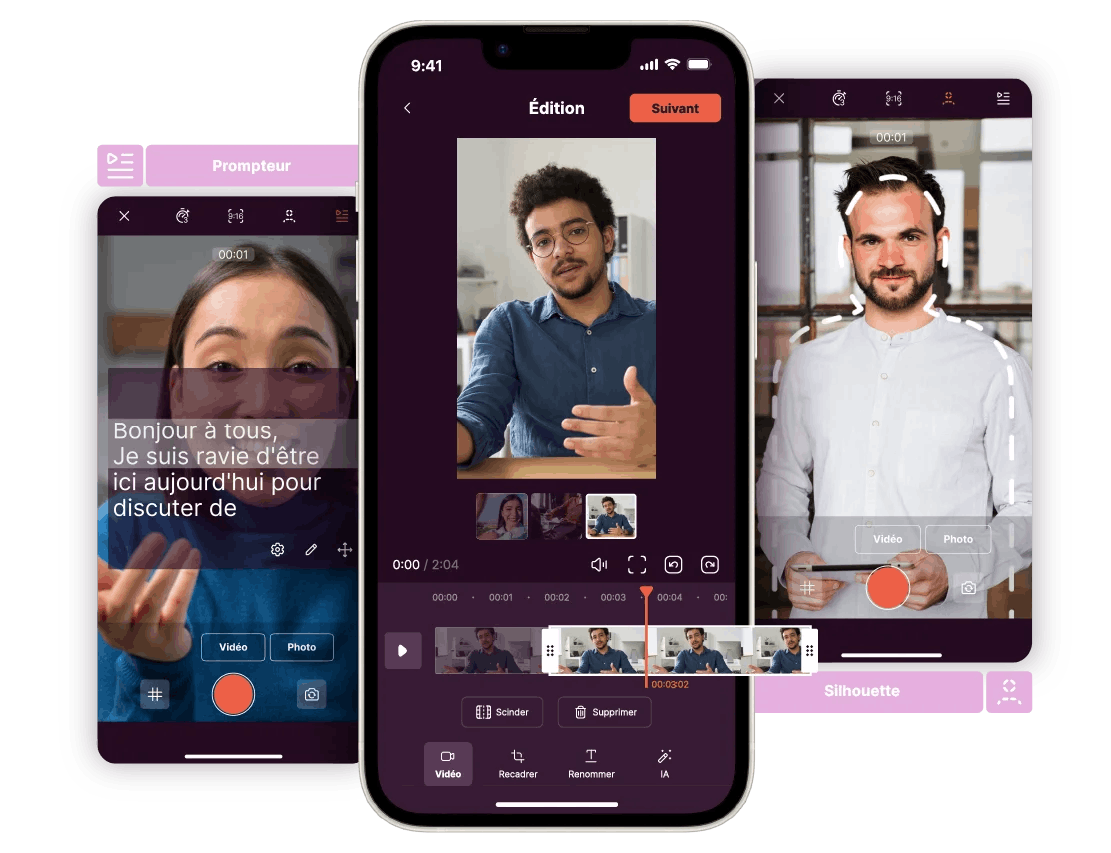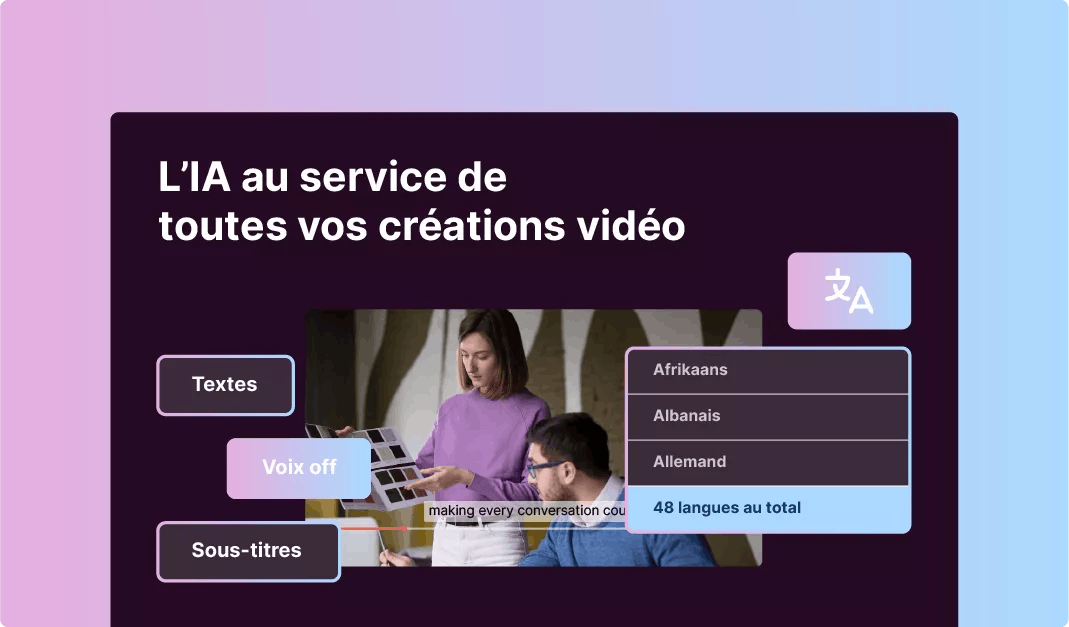Quels types de vidéo intégrer dans votre stratégie de marketing automation ?

Comment couvrir l'ensemble du parcours d'achat en vidéo ? Quel est le contenu le plus adapté à chacune des étapes de l'entonnoir ? Comment construire un planning éditorial cohérent ? Les réponses dans cet article.
60% des entreprises les plus performantes en taux de conversion utilisent désormais la vidéo comme atout marketing, de la sensibilisation initiale à l’après-vente (Aberdeen Group, 2018). Une utilisation transversale de la vidéo permet donc de multiplier vos chances de transformer vos prospects en clients. Entre la découverte de votre solution et son achat, le tunnel d’acquisition se compose donc de plusieurs étapes. Chaque étape est l’occasion de produire du contenu vidéo de qualité qui va optimiser le parcours prospect. Passage en revue des différents formats à intégrer selon l’étape du funnel et la définition de votre persona.
Première étape : la vidéo pour mettre du sel sur les maux avant de passer la pommade
Dans cette phase de découverte et de notoriété, votre objectif est de montrer que votre entreprise et ses services répondent à l’un des points de souffrance de votre prospect. Exemple avec Pitchy. Nous commercialisons un outil SaaS de création vidéo qui couvre l’ensemble des usages d’entreprise. Nos clients, des grands comptes essentiellement, sont conscients de devoir communiquer en vidéo mais rencontrent grosso modo quatre grandes difficultés : le temps, le budget, le manque de compétences et la mise en place d’une stratégie vidéo perenne.
Quel que soit notre message, nous devons donc délivrer du contenu qui se situe entre la situation actuelle (point de souffrance) de nos prospects et la situation dans laquelle ils auront résolu ce point de souffrance (l’adoption de Pitchy). Notre contenu aborde entre autres la question de l’internalisation de la création vidéo ou l’évangelisation de l’impact vidéo pour tous les métiers (RH, formation, marketing, communication, etc.).
Attirer l’attention des clients-cibles sur leurs problèmes revient finalement à enfoncer le clou là où cela fait vraiment mal avant de mettre en avant votre solution comme remède. Les vidéos en phase de découverte les plus performantes sont donc les suivantes :
- Interview filmée de vos dirigeants avec des influenceurs, grands dirigeants, leader d’opinion pour montrer indirectement que vous possédez dans votre portefeuille client des marques premium et/ou réputées ;
- Étude (chiffrée, et commentée) pour insister sur les points de souffrance et l’intérêt de choisir une solution
- Tutoriel, “How to” pour illustrer que le recours à une nouvelle solution est une option à envisager ;
- Vidéo marque employeur : quoi de mieux pour vendre votre produit ou votre service que de montrer des salariés heureux ! Un atout souvent sous-estimé qui peut aboutir à des contenus décalés et viraux.
Notre conseil : optimisez le contenu dans cette partie de l’entonnoir avec des appels à l’action en vidéo. Un écran cliquable ou un CTA éphémère, par exemple, peuvent inviter le visiteur à visionner une autre vidéo, télécharger un livre blanc ou aller plus loin dans l’entonnoir de conversion.
Deuxième étape, le benchmark de solutions et l’éducation du prospect
Le CEO de Vidyard, plateforme d’hébergement de contenus vidéo explique sur son blog que la majeure partie du contenu vidéo doit se concentrer sur les étapes d’évaluation ou de mi-parcours.
C’est effectivement à ce moment que votre prospect reconnaît l’existence d’un problème. Il recherche alors des informations sur les tendances du marché et les différentes alternatives en termes de solutions. A ce stade de maturité, votre contenu doit être authentique, faire autorité et doit éduquer votre prospect. Le but ? Lui permettre de déterminer les critères qui le guideront vers vous. Plusieurs vidéos sont conseillées à ce stade de l’entonnoir de conversion :
- Webinar qui vous permet de répondre aux points de souffrance grâce à votre solution;
- Interview filmée de vos dirigeants ou de vos collaborateurs sur leur expertise et ainsi créer de l’autorité, de la légitimité voire adopter une position de prescripteur sur votre marché ou secteur ;
- Vidéo d’experts du marché ;
- Vidéo sur votre écosystème et ses acteurs ;
- Une vidéo de présentation qui répond finement à ses problématiques métiers et sectorielles : vidéo recentrée sur un métier ou sur un cas d’usage spécifique ;
- Vidéo institutionnelle ;
Troisième étape, la vidéo pour faire basculer vers l’achat
L’acheteur dispose d’informations précises sur le marché et ses différents acteurs. Il a établi une shortlist plus ou moins étoffée de solutions qui répondent à ses critères de choix. Il ne reste plus qu’à démontrer pourquoi il a intérêt de vous choisir plutôt que le concurrent. L’objectif, à cette étape, est de montrer en quoi votre positionnement répond aux besoins spécifiques du prospect :
- Etude de cas ;
- Vidéo de démonstrations du produit/ service ;
- Témoignage client/ success story/ testimonial ;
- Vidéo de prise en main ;
- FAQ en vidéos ;
- Vidéos qui illustrent comment votre solution s’intègre à d’autres produits et services clés dans les écosystèmes de vos clients.
Notre conseil : créez des vidéos liées à des campagnes spécifiques et diffusez-les au bon moment. Si vous savez que votre prospect cible sera sur un événement auquel vous participez, créez par exemple une vidéo pour encourager une rencontre. En fin d’entonnoir, veillez également à utiliser des CTA pour lancer des démonstrations et des essais, et vous assurer que vous serez facile à joindre.
Quatrième étape, de la success story à l’ambassadeur
Un acheteur conquis peut vite devenir un ambassadeur. Les vidéos à ce stade de l’entonnoir ont donc comme objectif de renseigner le client sur des questions récurrentes, les fidéliser et les inciter à devenir des ambassadeurs.
Pour ce faire, il importe d’informer les clients de l’actualité de votre produit et de votre offre. Faîtes part de vos actus, de vos nouvelles fonctionnalités et de produits/services complémentaires. L’idéal est de communiquer sur l’ensemble des sujets qui font évoluer l’expérience client. Quelques exemples de formats :
- Vidéo produit : teaser et démo de vos nouvelles fonctionnalités intégrées à une newsletter produit ;
- Vidéo d’utilisateurs qui expliquent leurs bonnes pratiques pour créer du lien dans votre communauté ;
- Vidéo de suivi pour renforcer votre expérience client. Vous pouvez par exemple faire une vidéo sur comment s’est passé le premier mois d’utilisation ou redonner quelques conseils de base …
Ressources













